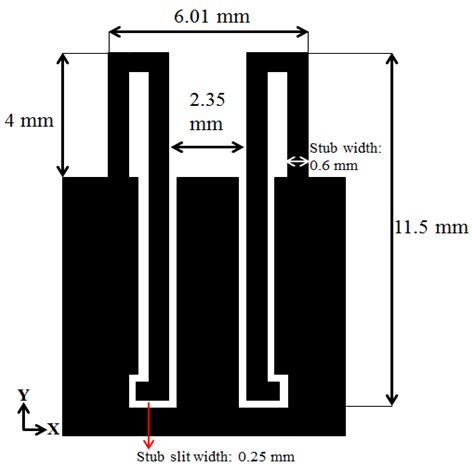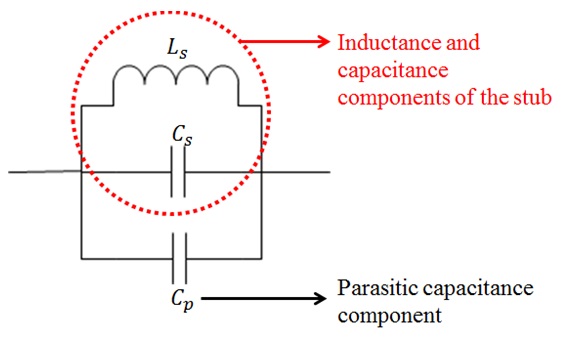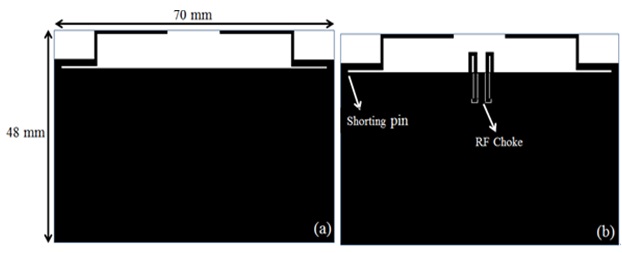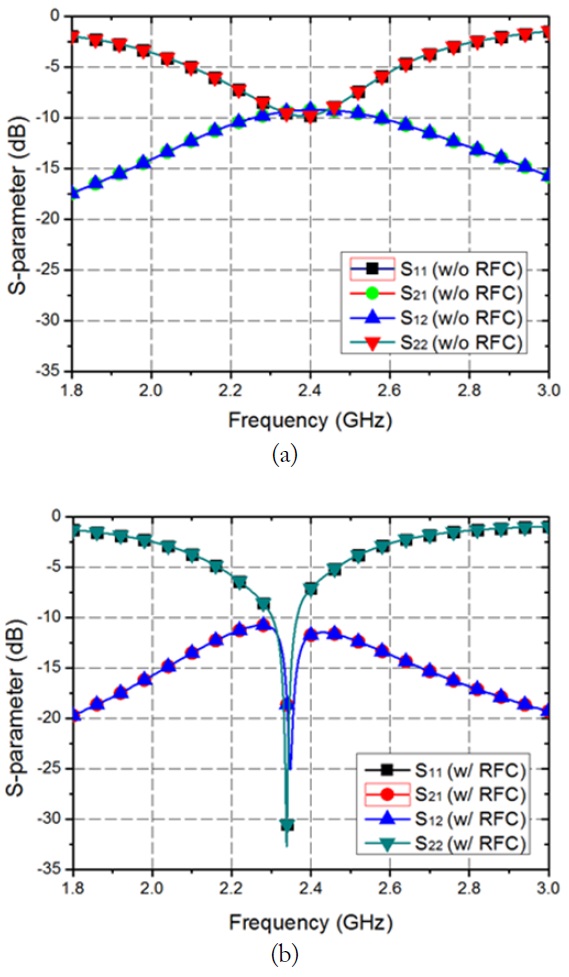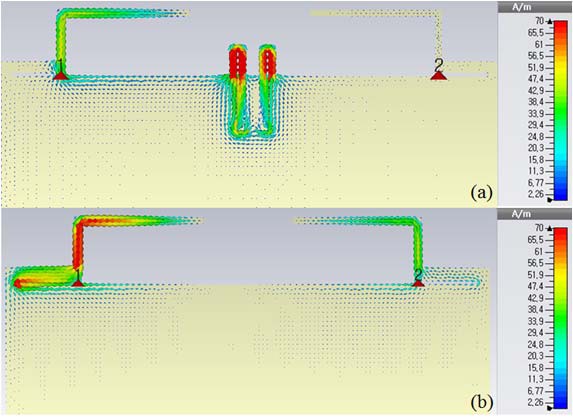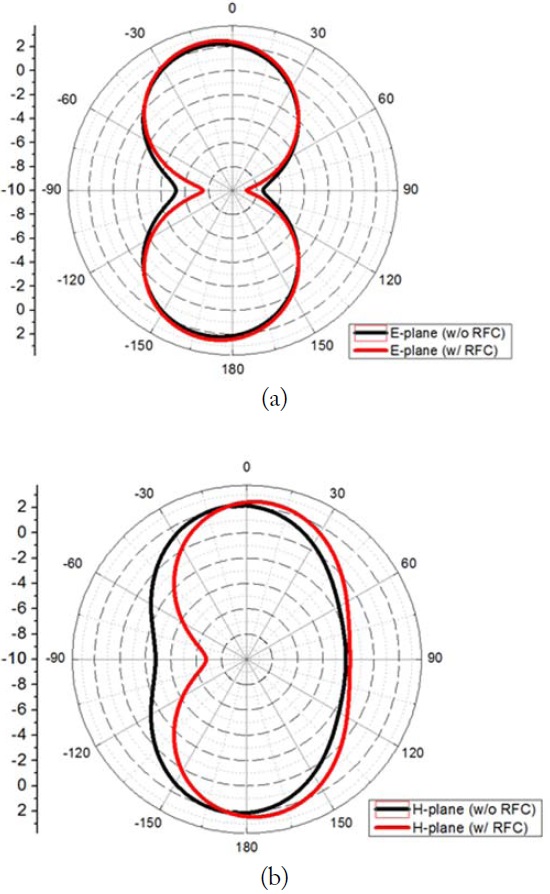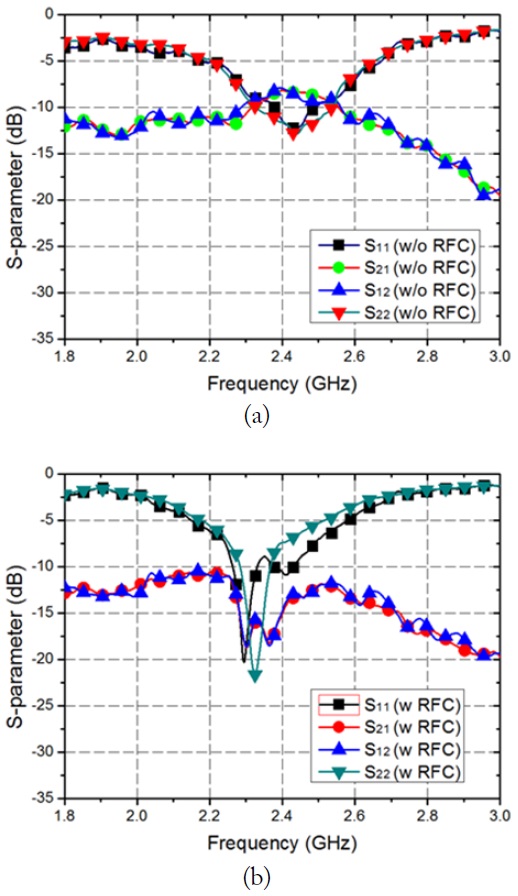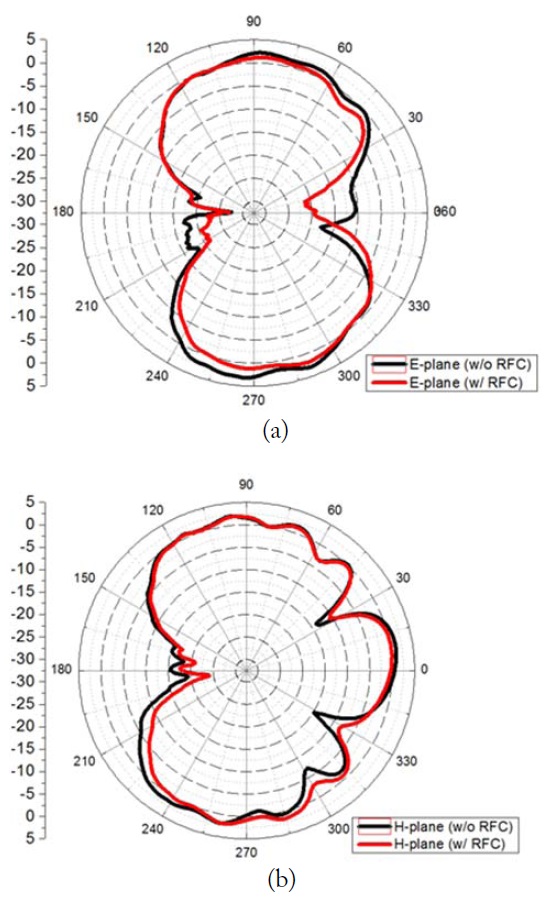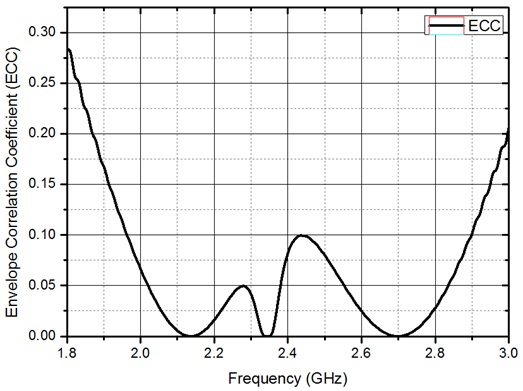



Recently, as wireless mobile communication techniques have grown rapidly, mobile devices have become light-weight, thin, and highly integrated. Because of these trends, mutual interference among the small components is getting worse. In multiple-input-multiple-output (MIMO) antenna systems, which share a common ground plane, antenna performances can be degraded. The problems include impedance of matching characteristics, return loss (
However, these structures are too big to implement in small devices. In [4, 5], mushroom-like electromagnetic band-gap (EBG) structures and defected ground-plane structures (DGS) are presented as isolation techniques. However, even though those modified ground structures are designed with high isolation characteristic, the negative effects, such as degradation of diversity gain, decreased efficiency, and impedance mismatch can accompany them, and they also have structurally large designs.
In this paper, a miniaturized radio frequency choke (RFC) consisting of modified stubs in MIMO antenna configuration is proposed to prevent ground edge current. The proposed RFC is composed of a bent open stub and slit structure on the ground plane that provides LC resonance in the LTE 2300 band.
The RFC using the slit structure is proposed for not only decreasing the size but also maintaining the antenna performances.
II. DESIGN OF THE PROPOSED RFC
The configuration of the RFC is shown in Fig. 1. The proposed RFC consists of two bent stubs that are implemented on the top of the ground plane and a single layer structure printed on FR-4 substrate (
The equivalent model for the proposed RFC is shown in Fig. 2. As previously mentioned, the proposed RF choke is based on the microstrip filter theory, and the bent stub has inductance and capacitance, which leads to the LC resonance characteristic. In the red circle, inductance and capacitance components, which vary according to the length of the stub, are represented, and the parasitic capacitance component (
The proposed RFC can be miniaturized by adjusting the gap-width, which provides additional capacitance in the RFC structure. As a result, the total electrical length of the stub (conventional
The overall MIMO configuration (overall dimensions are 70 mm × 48 mm) is shown in Fig. 3. Fig. 3(a) is the configuration without the RFC and Fig. 3(b) is when the RFC is placed in the middle of two IFAs. Each IFA is designed to verify the isolation performance in LTE 2300 band (2,300– 2,400 MHz) and to have a return loss under -6 dB (VSWR < 3) in the whole frequency range, as will be shown in Fig. 4.
The simulated
Fig. 6(a) and (b) represent the simulated radiation patterns on E- and H-planes with and without the RFC. On each plane, irrespective of the presence of the RFC, the radiation pattern is almost the same especially in the maximum radiation direction.
The fabricated RFC, which is located in the MIMO antenna configuration, is shown in Fig. 7. The measured
[Fig. 7.] Configuration of the fabricated radio frequency choke (RFC) in MIMO antenna configuration.
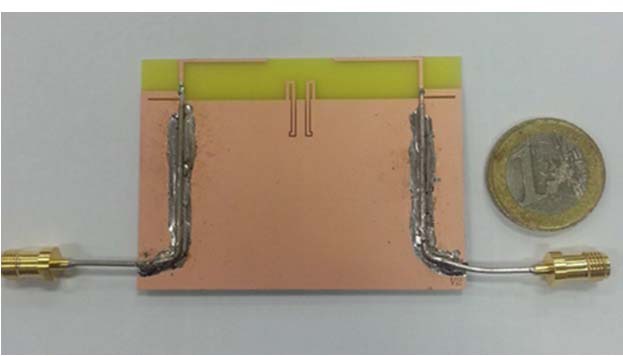
On the other hand, the isolation performance can be improved by adding the proposed RFC. The transmission coefficient is under -15 dB in the whole LTE 2,300 band (2,300–2,400 MHz) without degradation of antenna performance.
Fig. 9 depicts the measured radiation pattern on E- and H-planes. The measured radiation pattern is similar to the simulation result. The realized gain in the desired direction is 2.6 dBi.
In a MIMO antenna system, the correlation between the signals received from two antennas is an important factor for evaluating diversity performance. The concept of envelope correlation coefficient (ECC) is using in this paper to evaluate the diversity capability in a multi-antenna system.
The ECC should be computed using the 3D patterns from the full-sphere radiation patterns or directly in a representative scattering environment and can also be calculated with scattering parameters [6, 7]. The calculation of the ECC between the two antennas is given by following equation.
In Fig. 10, the achieved ECC is under 0.08 in the LTE 2300 band. It allows for low ECC in the frequency range of 2,300–2,400 MHz. The diversity performance in MIMO antenna configuration can be improved by implementing the proposed RFC.
In this paper, a miniaturized RFC using a modified stub has been proposed to improve isolation characteristics in MIMO antenna configuration. The proposed RFC consists of an open stub that is bent and a slit structure on the ground plane. The electrical length of the proposed RFC is shortened by around 40% (0.25
